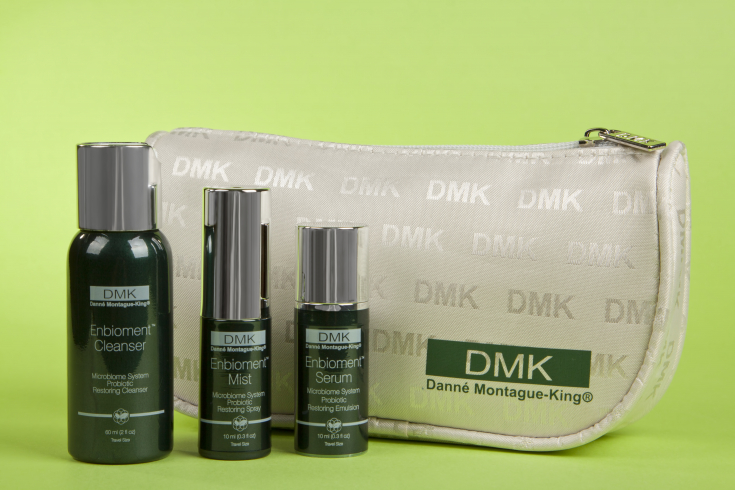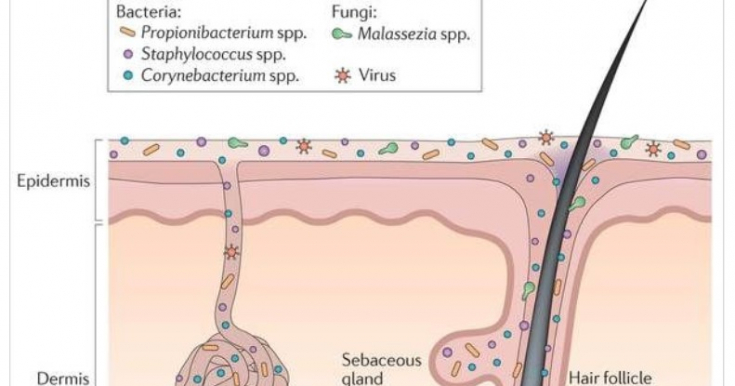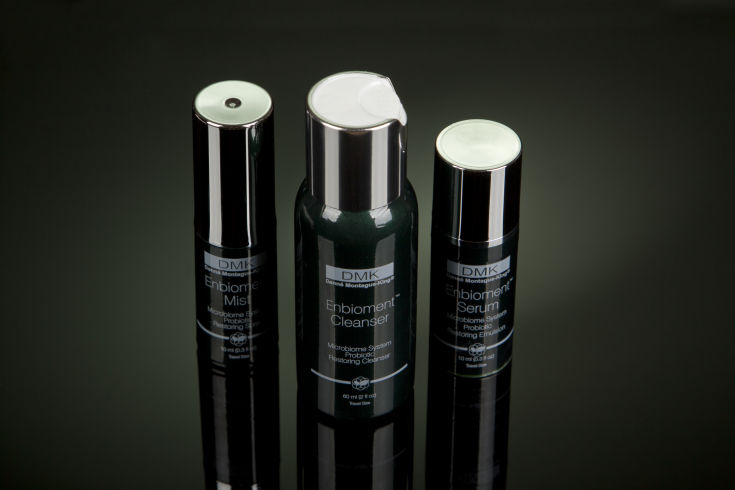To date, microbiome – This is a huge trend in aesthetic medicine. We can see a lot of companies that release products with a "microbiome preservation" label. At present, the accumulated knowledge that characterizes the skin microbiome, combined with experiments aimed at studying the biological functions of microorganisms on the surface, offers a new look at the relationship between human physiology and the skin microbiome.
Read the article on estet-portal.com about the functions and mechanisms of regulation of the skin microbiome, as well as its role in the development of the most common dermatological diseases from the founder of DMK (USA), a botanist, biochemist, scientist, who is a member of the 5- ku leading in the global cosmetic industry according to the American magazine «DERMASCOPE» − Danne Montagu-King.
- Skin microbiome concept
- Skin microbiome functions
- The role of the skin microbiome in the development of dermatological diseases
- Factors that affect the composition of the skin microbiome
Skin microbiome concept
D.M-K.: The microbiome is a very popular trend today among both doctors and manufacturers. But it is important to understand what exactly this concept includes.
Follow us on Instagram!
Community of microorganisms on human skin – microbiome is more complex than previously thought. Understanding the composition of the skin microbial community – a significant step forward in the treatment of many dermatological diseases, compared with the old classifications, which are based on the division of microorganisms into pathogenic and opportunistic pathogens. I am very grateful to the results of the backbreaking work of the research laboratory, whose data we used during the development of formulas for DMK products.
Today, the skin microbiome is known to be diverse, poorly organized, and different in different areas of the skin.
Skin microbiome functions
D.M-K.: First of all, under normal physiological conditions, the microbiome must maintain skin homeostasis and normal cell function thanks to enzyme systems that are synergistic in nature, if the condition skin is satisfactory.
Moreover, the interactions that characterize this skin system are important and are not limited to interactions between the microbiome and the host alone. The skin is unique among all epithelial integuments and is also adapted to complex ecological interactions with the environment, which, in addition to internal factors and hormonal levels, has a significant impact on its condition. These factors must always be taken into account when prescribing both daily care to maintain the physiological state of the skin, and in the treatment of dermatological diseases. This principle – Maintenance and normalization of the microbiome of the skin and metabolic processes in cells is the basis for the creation of products of the DMK company. We don't follow trends or marketing campaigns,

Intestinal Health – pledge of beauty and youth
It includes concepts such asprobiotics, prebiotics and postbiotics. In particular, prebiotics are part of the ecosystem that nourishes the epidermal microflora. The key in this system – these are postbiotics, substances that are derivatives of the vital activity of microflora and allow you to maintain a balance in this ecosystem. Also, it is important to consider that competition between microbial species is important for the development and maintenance of a healthy microbiomea.
The role of the skin microbiome in the development of dermatological diseases
D.M-K.: Disruption of homeostasis between the microbiome and the host may be associated with the development of many dermatological diseases. In particular, such as: acne, atopic dermatitis, rosacea, psoriasis and seborrheic dermatitis.
Acne − it is a chronic inflammatory disease of the pilosebaceous complex, where the change in bacterial colonization is one of the main elements of its development. The main mechanism for the development of acne – androgen-induced increased sebum production, impaired keratinization, inflammation, facial skin dysbiosis. The microorganism associated with the disease is Propionibacterium acne. Its secretion of a number of enzymes such as hyaluronidase, lipase and protease cause local damage and inflammation of the skin.

Atopic dermatitis (AD) – a chronic inflammatory skin disease whose prevalence is increasing in industrialized countries. A hallmark of AD is increased bacterial colonization and extremely high susceptibility to infections caused by S. aureus and viruses. It has been proven that the change in the microbial composition of the skin occurs due to dysfunction of the skin barrier. The greater vulnerability of the skin in this disease may also be due to a decrease in the production of antimicrobial proteins (AMPs) in the skin. When the protective barrier of the skin is broken and the production of AMPs ceases, homeostasis in the microorganism-host system shifts.
Danne Montagu-King: “If a patient has healthy facial skin – You will achieve excellent results with injection techniques»
Psoriasis – idiopathic inflammatory skin disease that affects 2% of the world's population. The diversity of the microbial community in lesions is much greater than in healthy skin: Firmicutes predominate, while Actinomycetes are not present in the proper amount in psoriatic lesions compared to healthy skin. Research is underway to determine whether changes in the microbiome are a consequence of the disease or are involved in its pathogenesis.

Factors that influence the composition of the skin microbiome
D.M-K.: The skin is exposed to many influences every day. They can be divided into external and internal. The most significant external factors include: environmental conditions, ultraviolet and radio radiation, the use of aggressive skin care and cleansing products, traumatic cosmetic procedures (the effect of a laser, aggressive peels, dermabrasion), the influence of stress factors.
What are the effects of antioxidants on the skin
Internal factors that have a direct impact on the condition of the skin include: hormonal levels, the state of the gastrointestinal tract and type of nutrition, hereditary factors (for psoriasis, atopic dermatitis). Therefore, the main task of the doctor in the treatment of dermatological diseases should be selection of products that can control and correct the work of skin microorganisms in accordance with its metabolic characteristics and the initial goals of therapy.
Our development – is aDMK Enbioment® system that has a beneficial effect on the microbiome and aims to restore a healthy balance of the skin microflora. The line includes 3 products: a microbiome-friendly cleanser, a prebiotic spray and a probiotic serum. All three formulas contain bacterial enzymes that provide a postbiotic effect and have only a natural preservative.
Premature aging of the skin: what stress can lead to
Modern technologies have forced us to rethink our understanding of ourselves, presenting our normal physiology as a complex dynamic interaction between many microorganisms. As soon as there are changes in genetics or the environment, the microbiome can also change rapidly. A better understanding of the interactions between host, commensals, and pathogens can help develop a better strategy for managing skin diseases.







Add a comment